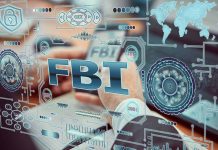
Dark web monitoring emerges as a crucial defense against cyber threats, but its implementation comes with both benefits and challenges.
At a Glance
- Dark web monitoring is essential for early threat detection and risk mitigation
- It provides visibility into potential data breaches and stolen credentials
- Effective monitoring solutions offer comprehensive coverage and real-time alerts
- Integration with existing cybersecurity frameworks enhances overall security posture
- Challenges include potential false positives and limitations in tracking all data
The Growing Importance of Dark Web Monitoring
As cyber threats continue to evolve in sophistication and complexity, organizations are increasingly turning to dark web monitoring as a critical component of their cybersecurity strategies. This hidden part of the internet, accessible only through specialized software like Tor, has become a haven for cybercriminals engaging in illicit activities, including the sale of stolen data and the orchestration of cyberattacks.
The dark web’s anonymity, while beneficial for some users such as activists, poses significant risks to individual privacy and corporate security. Implementing dark web monitoring allows organizations to preemptively identify and mitigate these risks by detecting the dissemination of sensitive information early on.
Key Features of Effective Dark Web Monitoring Solutions
Advanced dark web monitoring solutions actively scan this obscure part of the internet for potential threats. These tools provide timely alerts and seamlessly integrate with existing cybersecurity frameworks, thereby strengthening overall security measures while ensuring compliance with regulatory standards.
Key features of effective dark web monitoring solutions include comprehensive coverage of dark web forums, marketplaces, and communication channels, as well as real-time alerts that enable swift action against potential threats. Additionally, these solutions often employ artificial intelligence and machine learning to enhance their detection capabilities and reduce false positives.
Benefits of Dark Web Monitoring
Dark web monitoring offers several significant advantages for organizations looking to bolster their cybersecurity posture. One of the primary benefits is the early detection of compromised credentials, which can prevent unauthorized access to sensitive systems and data. This proactive approach allows companies to take immediate action to mitigate potential breaches before they occur.
“There’s never a good time to experience a data breach, but reducing the mean time to detect a breach can make all the difference in how effectively your organization recovers from one,” said a spokesperson for Verizon.
Furthermore, dark web monitoring aids in online brand protection by identifying phishing kits and impersonation websites that could harm a company’s reputation. It also plays a crucial role in supply chain risk management, helping organizations identify compromised vendors or partners that could pose a security risk.
Challenges and Limitations
While dark web monitoring offers numerous benefits, it’s important to acknowledge its limitations. One of the primary challenges is the potential for false positives, which can lead to unnecessary alerts and resource allocation. Additionally, the vast and ever-changing nature of the dark web makes it impossible to track all data comprehensively.
Organizations must also consider the ethical implications of dark web monitoring and ensure compliance with relevant privacy laws and regulations. Despite these challenges, the benefits of dark web monitoring often outweigh the drawbacks when implemented as part of a comprehensive cybersecurity strategy.
Integrating Dark Web Monitoring into Cybersecurity Frameworks
To maximize the effectiveness of dark web monitoring, organizations should integrate it into their broader cybersecurity frameworks. This integration allows for a more holistic approach to threat detection and risk mitigation. By combining dark web intelligence with other security measures, companies can create a more robust defense against evolving cyber threats.
Regular updates to monitoring parameters, employee education on dark web risks, and continuous improvement of detection algorithms are essential practices for maintaining an effective dark web monitoring strategy. As cyber threats continue to evolve, so too must the tools and strategies used to combat them.
Conclusion
Dark web monitoring has become an indispensable tool in the fight against cyber threats. By providing early warning of potential breaches, protecting brand reputation, and enhancing supply chain security, it offers a valuable layer of defense for organizations of all sizes. While challenges exist, the benefits of implementing a robust dark web monitoring solution far outweigh the potential drawbacks, making it a critical component of modern cybersecurity strategies.
Sources:
- https://www.mdpi.com/2624-800X/4/2/18
- https://techbullion.com/dark-web-monitoring-solutions-detecting-threats-before-they-happen/
- https://www.linkedin.com/pulse/dark-web-monitoring-pros-cons-your-business-security-strategy-s7y9f
- https://cyberint.com/blog/dark-web/dark-web-monitoring-the-linchpin-of-external-risk-management/




















